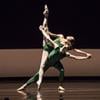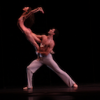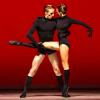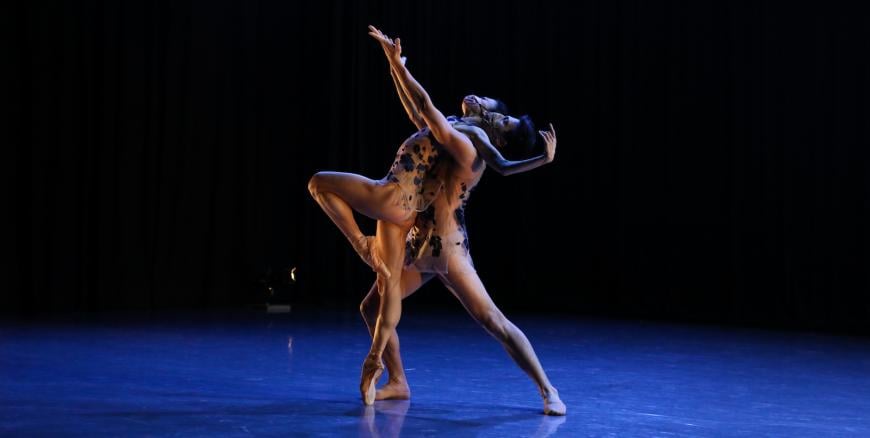
Can it have been only two years ago that the Joffrey Ballet played Zellerbach Hall? So much has happened since then — to the company, to the world. Last weekend, the Joffrey touched down once again via Cal Performances, bringing a diversely engaging program. While showcasing a troupe whose superb artistry was seemingly little affected by its enforced pandemic hiatus from live performance, the mixed repertory was a mixed blessing.
Three of the five ballets premiered — digitally — in 2021, a wonderful way to continue bringing the Chicago-based Joffrey and worldwide audiences together. But only one ballet, Nicolas Blanc’s Under the Trees’ Voices, which live-premiered at Chicago’s Lyric Opera House last October, has made a thoroughly satisfying leap to the stage.
Joffrey rehearsal director Blanc, whose Beyond the Shore was a highlight of the troupe’s last visit, this time offered a brilliant large-format (15 dancers) work of sensuousness, mystery and epic sweep set to music by Ezio Bosso beneath a constantly changing canopy of huge leaves, designed and lit by Jack Mehler. (Blanc, like Joffrey Ballet Artistic Director Ashley Wheater, is a San Francisco Ballet alumnus.)
For three couples, a soloist and a corps of eight, leggy in leaf-spattered brief tunics, the Voices’ physicality was shifting and eloquent, with moods ranging from the expansive exuberance of huge lifts, legs scissoring, to controlled pas de deux — in which the raised foot often presented itself flexed, twig-like, a contrast to standard neoclassical ballet vocabulary — to overriding lovelorn sorrow (in a fine turn by Christine Rocas). The three marvelous couples were Victoria Jaiani and Temur Suluashvili, Jeraldine Mendoza and Dylan Gutierrez, and Amanda Assucena and Alberto Velazquez. Transitions between styles and moods went forth in an intimately ingratiating manner, like a fine French film — or as a part of the Joffrey Studio Series, which is how it premiered.
It’s been 66 years since the company’s founding by Robert Joffrey and Gerald Arpino, and the show opened with a salute to Arpino, his 1986 Birthday Variations, set to Verdi — six little variations, framed by an ensemble — a sweetly demanding confection for one yeoman danseur (Stefan Goncalvez) who did most of the heavy lifting, and lovely pointework and ballon from the pastel-romantic-tutu-clad Dara Holmes, Julia Rust, Gayeon Jung, Olivia Tang-Mifsud, and Princess Reid beneath a sparkling chandelier.
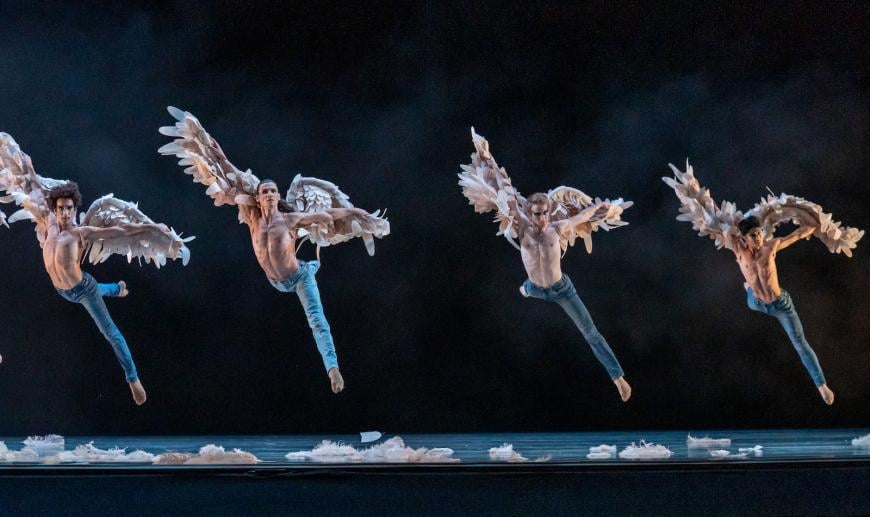
Swing Low, set to Zoe Keating’s interesting, oft-discordant riff on the spiritual and choreographed by Chanel DaSilva, brings a newcomer to the heavenly gates, but misses the chariot. Lead dancer Xavier Nuñez’s tortured floorwork beautifully brought home his anguish and doubt, which gradually subsided under the ministrations of four angels with feathery white wings harnessed to their arms. This is where the ballet faltered. The wings were awkward looking. Perhaps they read better on video, but to this onlooker, they were reminiscent of the gear for a school Christmas pageant. They also interfered with the potency of the movement of the male ensemble’s torsos and arms. Even Clarence, the angel trying to win his wings in the movie It’s a Wonderful Life, was awarded better raiment than our newcomer, who finally does get his wings.
Dancers Valentino Moneglia Zamora, Nicole Ciapponi, and Fernando Duarte entertainingly triangulated the battle between the sexes, and/or genders, in the delightful crowd-pleaser The Sofa (1995), choreographed by Itzik Galili to Tom Waits’s “Nobody.” It’s a symphony of sexual harassment and expectations, always misguided (but you knew that), with desperate airborne lunges diverted in the nick of time and surprises galore, ending in comity and guffaws.

Joffrey dancer Yoshihisa Arai’s Boléro, set to guess what, ended the performance on a somewhat ambiguous note. Despite its careful choreography, it, like countless other choreographies to the Ravel work, is of necessity bound by its accelerating tempos, its slow beginning, its frenetic conclusion. The new wrinkle in this full-company outing is the presence of a “muse,” to quote the program description, who leads the “disciples” through “a serene world of light and shadows.”
The disciples wear unisex black sarongs; the muse wears a tailored white shirt. Jarringly, he looked like he had just wandered in off the street and was moved to join in as a somewhat bewildered figure, not to lead. The choreographer says he was inspired by the changes in instrumentation, triggering the final frantically triumphal outpouring. Despite the unstinting grace and energy of the dancers, however, this Boléro did not triumph, unlike the company that undertook it.
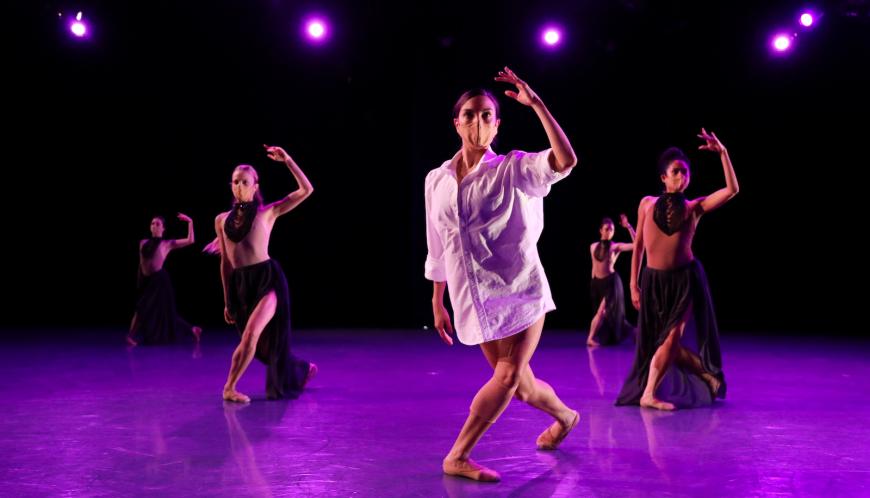
Note: Photos above show alternate cast members.


